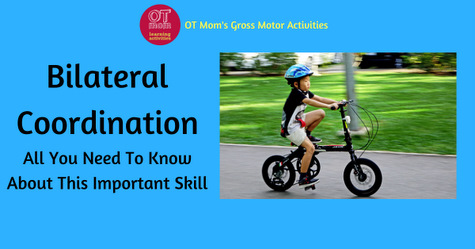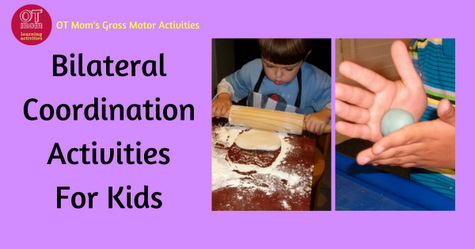Do Your Child's Hands
Work Together Well?
What do cutting with scissors, using a knife and fork together, and tying shoelaces all have in common? All these activities need your child’s hands to work together well!
This is called bilateral coordination or bilateral integration - being able to coordinate the movement of both sides of the body.
Bilateral coordination extends to gross motor movements too: jumping with both feet together, skipping, catching a ball and kicking a ball are all activities that need the arms and legs to work together in a coordinated way.
There are 3 different types of bilateral movement:
Symmetrical Movement – where both hands or both legs do the same thing at the same time, like pushing a rolling pin
Reciprocal Movement – where each hand or leg takes turns carrying out the same movement rhythmically, like pulling hand over hand on a rope
Leading Hand and Supporting Hand – one hand plays a
supporting role, while the other hand does more skilled work, such as one hand holding the paper while the other hand opens and closes the scissors.
I have two very helpful articles on my site – one packed with information and one packed with activities you can do at home with your kiddos. Use this vacation time to help your child develop this important skill!

All About Bilateral Coordination!

Activities To Develop Bilateral Integration Skills!
This information and the suggested activities are meant to promote your child’s normal development. If you are at all concerned about your child's development, please consult your health professional. The information on my website is not intended to take the place of an occupational therapy evaluation and treatment!
Please do feel free to share this email or webpages with anyone you think will benefit from information about bilateral coordination.
Thanks so much for joining me again this month! Keep healthy and strong!
Tracey
Living Life Abundantly!
John 10:10

